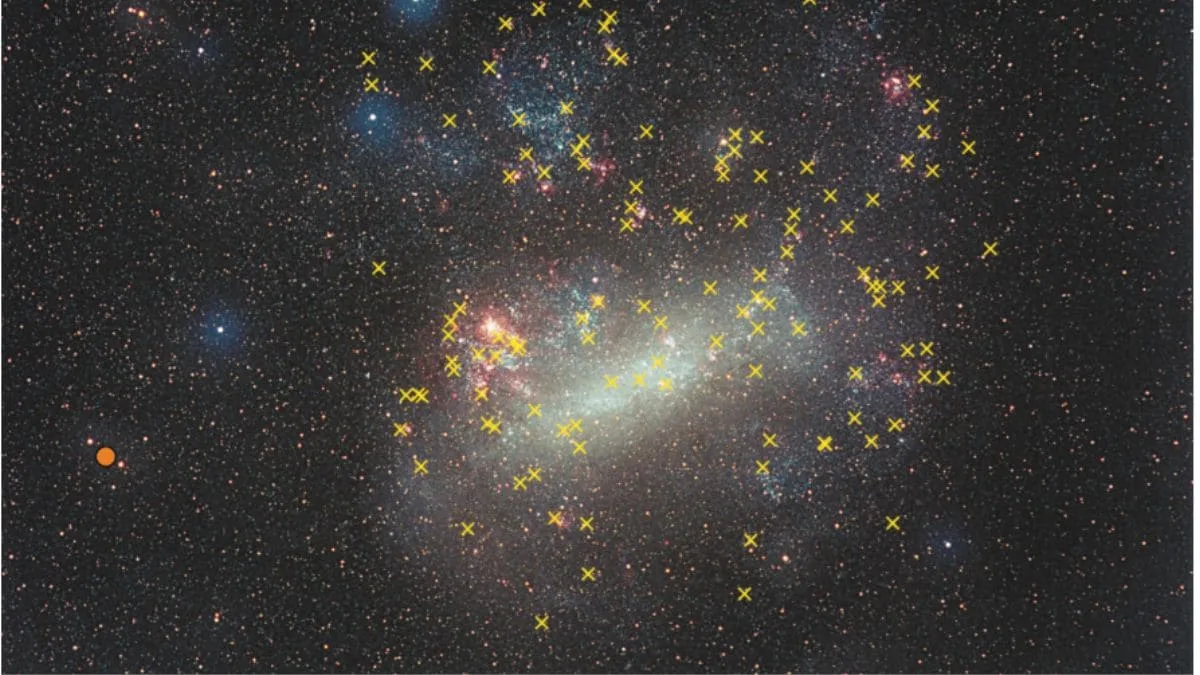
Scientists Discover Two New Supernova Remnants in a Surprising Location

Two mysterious light sources detected on the outskirts of the Large Magellanic Cloud have been identified as previously unknown supernova remnants. The discovery was made using the European Space Agency’s X-ray observatory, XMM-Newton after observations revealed unexpected X-ray emissions. Supernova remnants are formed when massive stars explode, creating shock waves that ionise and compress surrounding interstellar matter. The detection of these remnants in an area where supernovae are rarely found has raised new questions about the distribution of ionised gas in this dwarf galaxy.
Identification of J0624-6948 and J0614-7251
According to a study published in Astronomy & Astrophysics, the two supernova remnants, J0624-6948 and J0614-7251, were observed as distinct circular structures in visible-light imaging. The newly released images from ESA show these remnants in the lower-left portion of the Large Magellanic Cloud, with J0624-6948 appearing in orange and J0614-7251 in blue. As reported by space.com, previously identified supernova remnants in the galaxy were marked with yellow crosses. The study explains that for a supernova to leave behind a remnant, the explosion must occur in a region containing ionised gas, typically found in dense star-forming areas rather than in the outskirts of a galaxy. The brightness and size of the newly detected remnants align with other confirmed cases in the Large Magellanic Cloud.
Impact on Understanding of Galactic Structures
In an official statement ESA scientists noted that these findings suggest a higher concentration of ionised gas in the Large Magellanic Cloud than previously estimated. The research proposes that interactions between the Milky Way, the Small Magellanic Cloud, and the Large Magellanic Cloud could be influencing the movement and compression of interstellar material. It is suggested that gravitational forces between these galaxies may be altering gas distribution, leading to unexpected regions of star formation and supernova activity.
For the latest tech news and reviews, follow Gadgets 360 on X, Facebook, WhatsApp, Threads and Google News. For the latest videos on gadgets and tech, subscribe to our YouTube channel. If you want to know everything about top influencers, follow our in-house Who’sThat360 on Instagram and YouTube.














